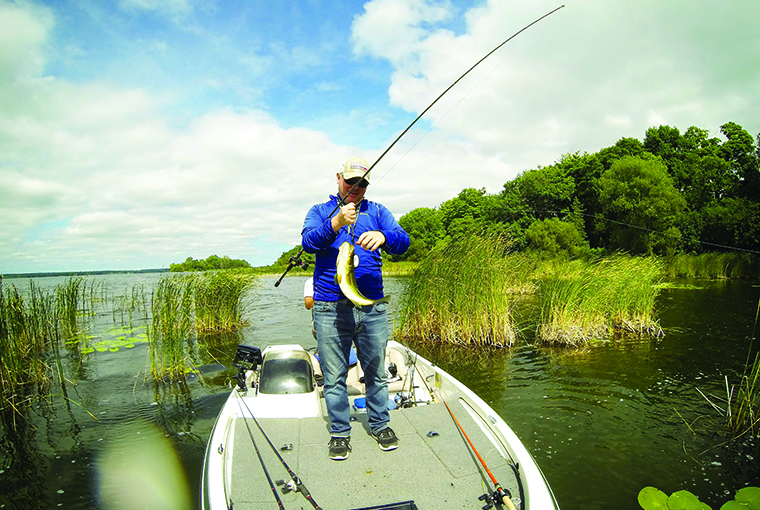
As we turned a final corner on the way to our favourite bass lake, we found the parking lot flooded. I stopped on a dry patch to prepare my boat. I left my uncle, along with my shoes and socks, in the boat and slipped it into the water. The lake was at record-high levels after continuous spring rain and a heavy snow melt.
With the traditional shoreline mark crested, we cast lures to newly flooded bushes, trees, lawn furniture, and firepits with very little to show for our morning’s efforts. Tired of getting tangled in shallow cover, my uncle cast away from the bank into open water. Immediately, his rod bent, and his first three-pounder came over the gunnel. He boated seven more within 20 casts. Being no fool, I adjusted the boat so we could focus on the original shoreline, now under three feet of water.
Productivity = enjoyment
Fishing during a flood wasn’t as easy as I expected. Like all fishing, finding the most productive areas is the key to a good day on the water.
Kawartha Lakes Guiding Service owner Scott Homes is in tune with what’s happening on the waters he plies from early spring to late fall.
“Around here, if the spring has made water levels high, the water will still be high come opening of the bass season,” the Little Britain resident said. “the cool thing about these ultra-shallow bass, is the shark wake. Watching them come in for the bait is something else. Largemouth can be shallower than you’ll ever expect. They can be in such ultra-shallow water that their backs are almost out of the water.”
Water levels do vary across the province. Lake Huron was high in 2020, resulting in higher-than-normal levels on Lake St. Clair and the St. Clair and Detroit Rivers well into the summer. In past years, Lake Ontario water level reached record levels for weeks. Being aware of the conditions will keep you in the action if you adjust accordingly.
Getting to the point
Points are bass highways. As they push into shallow water or retreat, they follow the contours of a point. A two-pronged approach is a great way to dissect a point. Survey the entire point with a fast lure like a spinnerbait, chatterbait, or shallow crank. Once a sweet spot is discovered, work it over with something on the bottom. The change doesn’t need to be dramatic. Even a stiff wind can push water into flooded areas and trigger a mini-migration.
Stick to the slope
On flat topography, even a water-level rise of a foot will suddenly grant you acres of new fishing waters. Hours can be spent fishing everything. Sticking to the slopes is a wise strategy.
Even a gentle slope will focus bass by limiting what newly flooded cover is available. I learned a valuable lesson from the late Hank Gibson of Keswick decades ago. Bass love to go as far back in the cover as possible during high water periods, he explained. A sloping bank grants them new cover, but still allows them access to lures. Hank learned many tricks while on the Bassmaster circuit during the late 1980s and early 1990s and applied them on his home waters of Cooks Bay and the Kawarthas.
As water rises, steeper banks still provide great cover but make the amount of fishable water more manageable. Gibson was a master with a spinnerbait and loved to work them through flooded bulrushes and trees.
Catching current
When water levels are in a period of flux, current can be strong. Naturally, this is most common in rivers, but rising or falling lake water will also create current. Chubby bass will seek shallow backwaters, current seams, and eddies along cover. They will seek just about anything to shield themselves from the force of the moving water.
Years ago, the Trent Severn Waterway moved significantly more water than usual as it recovered from a record-breaking spring flood. Even by late June, water levels were still high and currents swift. Boating became challenging and bass impossible to find. Being stubborn paid off for me and several buddies as we discovered bass tucked far into the undercut riverbanks and behind gnarly, overturned tree roots. Anything that blocked the current held bass. Concentrated in these spots, bass became very predictable. By early July, water levels dropped, and currents became more manageable. Bass left the bank and suspended along the massive up-ended trees that lined the recently flooded shoreline.
Bass memories
Homes is a big fan of high-water river bass fishing. “I’ve done my best in rivers during high water periods. The bass will go way back there, to places I normally couldn’t get my boat in. When you find a good area, it will be loaded.”
Doing well in tournaments creates memories and Homes has a great one from when high water paid off for him.
“We were fishing the river that connected two lakes in the Kawarthas. We went there first thing and only caught a few. On a return visit to that spot, we caught 17 bass. The busier the river got with boat traffic, the more bass moved shallower and shallower,” he recalled.

Originally published in the June 2021 issue of Ontario OUT of DOORS magazine.
Luigi’s love affair with angling started when he was a lad and has never faltered. When not gawking at lures, he can be found setting goose or turkey decoys, or in a tree stand. Reach Luigi at: mail@niteowldev.com


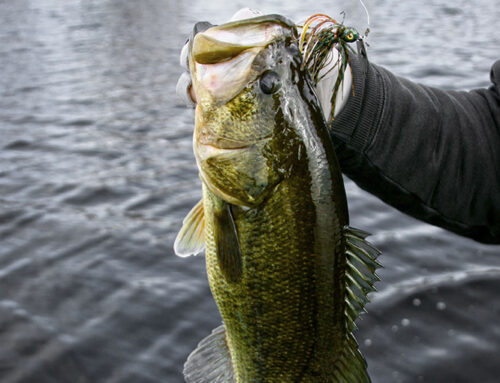
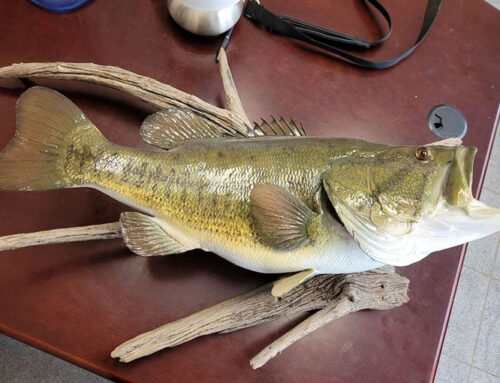
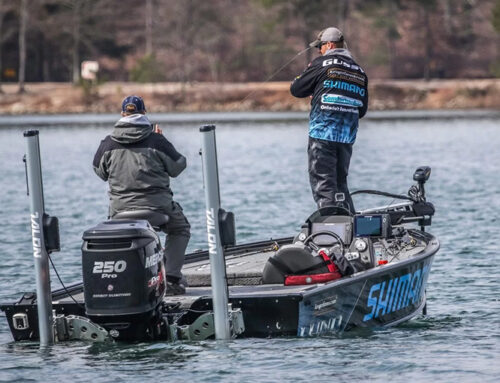
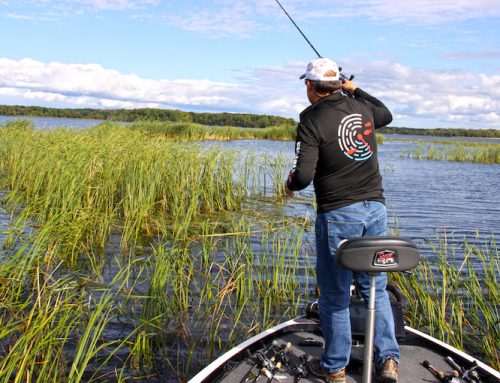
Leave A Comment